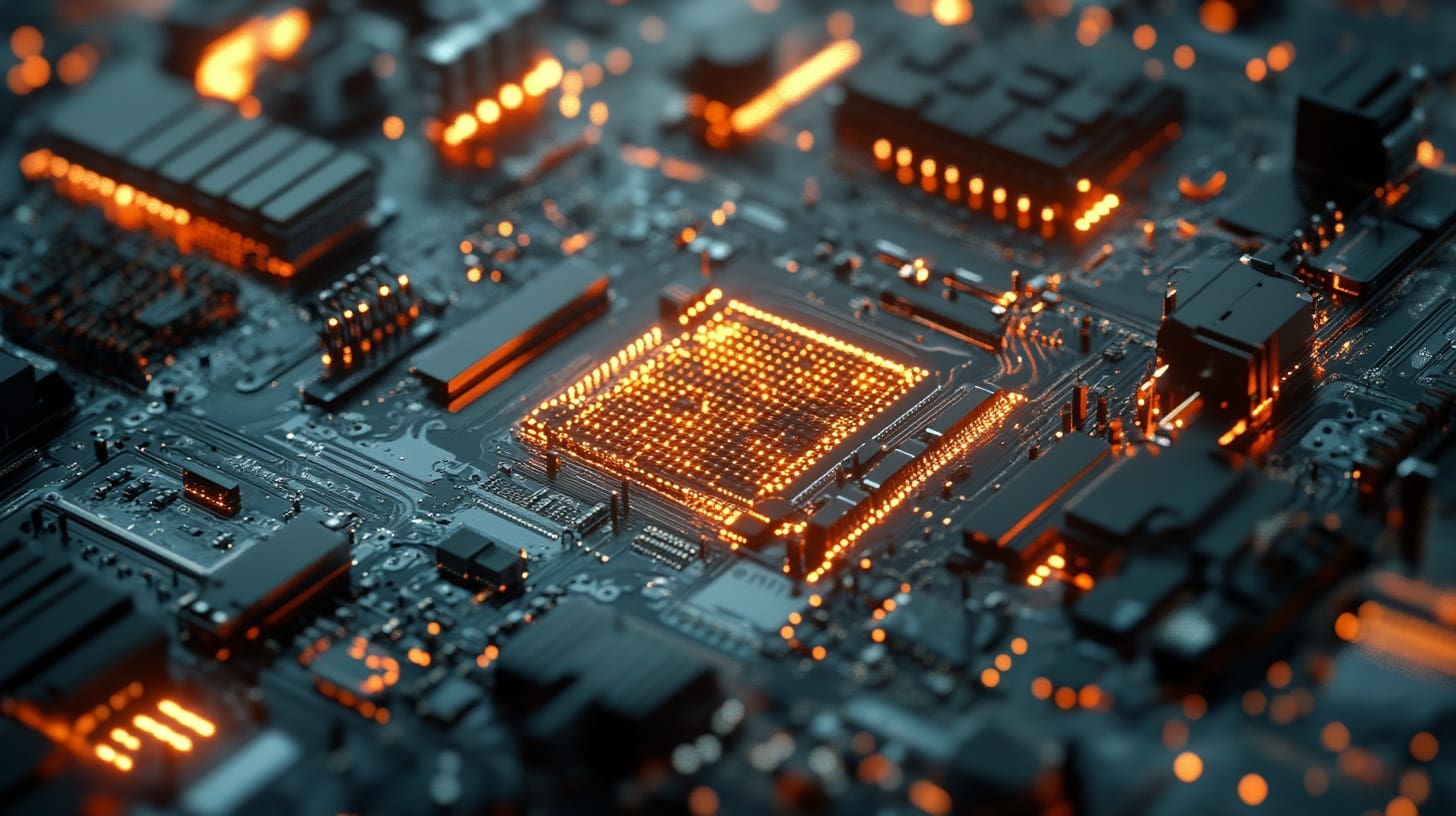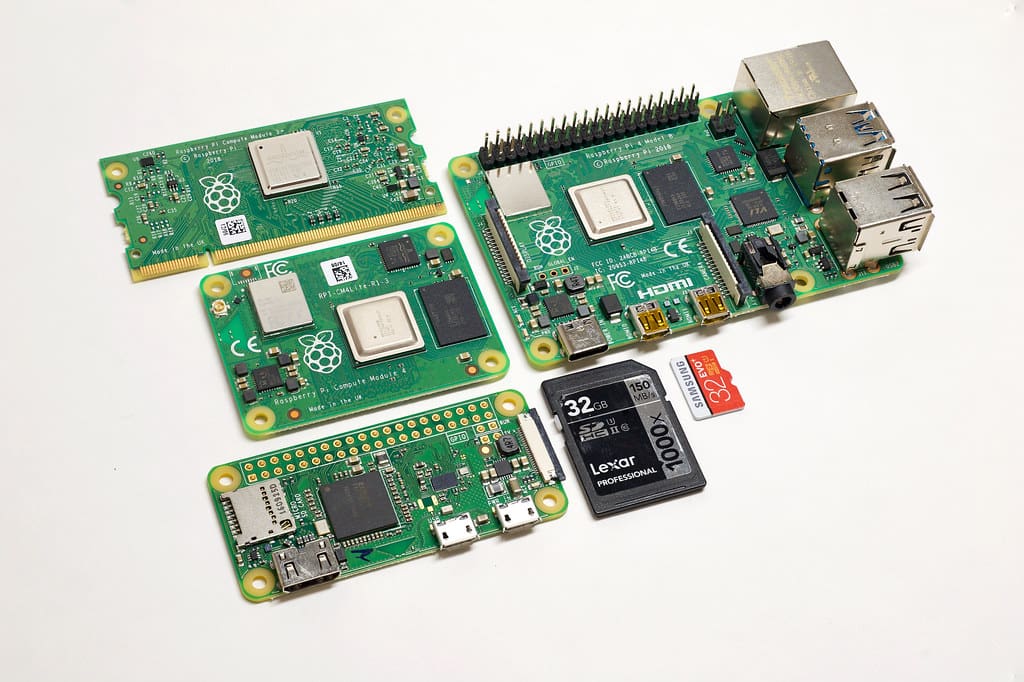Batch learning, also known as offline learning, is a type of machine learning approach in which the model is trained on a fixed, comprehensive dataset, typically all at once, rather than incrementally or in real-time. In this approach, data is gathered, preprocessed, and organized into batches, then used to train the model until it has learned the underlying patterns or relationships within the data. Once trained, the model is deployed to make predictions on new data without updating itself further unless retrained on a new batch.
Batch learning is widely used in scenarios where data doesn’t change frequently or where periodic updates are sufficient. For example, in image recognition, recommendation systems, and large-scale text processing, batch learning allows for the processing of vast datasets in a single, controlled environment, leading to models that are well-optimized for specific tasks.
This article will delve into the core concepts, advantages, and limitations of batch learning. We’ll also cover the types of tasks that batch learning is best suited for and how it differs from its counterpart, online learning.
Key Concepts in Batch Learning
To understand batch learning, it’s important to explore some foundational concepts that define how this approach works, including how data is organized, processed, and used for model training.
1. Fixed Dataset
Batch learning relies on a fixed dataset that does not change throughout the training process. The data used is collected in advance, cleaned, and preprocessed, and then presented to the model in batches for training. Because the model trains on a static dataset, batch learning is also referred to as offline learning.
- Example: In a movie recommendation system, a batch learning approach might use a large, pre-compiled dataset of user preferences, ratings, and interactions. This dataset is used to train the model once, without the need for continuous updates based on new interactions.
2. Batch Processing
In batch learning, the dataset is divided into smaller groups, or “batches,” which the model processes iteratively. This batch-based approach improves computational efficiency by breaking down the data into manageable sections, allowing the model to update its parameters incrementally within each batch until it has processed the entire dataset.
- Example: For a dataset containing one million images, batch processing allows the model to train on smaller subsets of images at a time, rather than processing the entire dataset at once, which reduces memory requirements and computational load.
3. Full Dataset Training
Unlike other learning methods that update the model incrementally or in real time, batch learning trains the model to completion on the entire dataset before it is deployed. This method provides a robust and comprehensive understanding of the data, allowing the model to achieve a high degree of accuracy and stability before deployment.
- Example: A spam detection system trained on a comprehensive set of labeled emails, including examples of spam and non-spam, will learn the patterns of spam messages fully during training. Once trained, the model is deployed without further updates, effectively detecting spam until retrained with new data.
4. Model Deployment and Retraining
After the initial training phase, a batch learning model is deployed for use, typically without further updates. In practice, this means the model will maintain the same weights and parameters until it is retrained on a new, updated dataset. Retraining may occur periodically to incorporate new data or address data drift, but each retraining is a separate event, often requiring downtime.
- Example: An e-commerce product recommendation model trained in batch mode may be retrained every few months to incorporate the latest purchasing trends, but during each batch cycle, it remains static until retraining.
Batch learning’s reliance on a fixed dataset and its requirement for periodic retraining set it apart from online learning, which continuously updates as new data arrives. Batch learning is well-suited for tasks that don’t demand real-time adaptation and can benefit from training on large, carefully curated datasets.
Advantages of Batch Learning
Batch learning offers several advantages, making it a popular choice in many machine learning applications where accuracy, stability, and resource efficiency are priorities.
1. High Model Stability
One of the key benefits of batch learning is the stability it provides. By training on a fixed dataset all at once, the model’s learning process is highly controlled, reducing the risk of fluctuating performance due to constant updates. This stability is ideal for applications where consistent performance is more critical than immediate adaptability.
- Example: In medical image analysis, where a model must classify diseases based on MRI or CT scan images, batch learning ensures a stable, reliable model trained on a comprehensive dataset, minimizing unpredictable performance changes.
2. Computational Efficiency
Batch learning is computationally efficient in terms of training time because it processes data in controlled batches rather than continuously. While batch learning requires substantial computational resources during the initial training phase, it does not require ongoing computational resources for retraining as new data arrives. This efficiency can make it more suitable for organizations with limited computational infrastructure.
- Example: In large-scale natural language processing tasks, such as language translation, batch learning allows the model to be trained on massive text corpora all at once, without the need for constant retraining as new text data is collected.
3. Enhanced Accuracy Through Comprehensive Training
Since batch learning trains the model on a full, curated dataset, it allows the model to learn complex relationships within the data more accurately. This training method can yield highly optimized models that capture subtle patterns, as the model has access to the entire data distribution during training.
- Example: In financial fraud detection, a batch learning model trained on an extensive dataset of past transactions, including fraudulent and non-fraudulent transactions, is likely to capture nuanced patterns associated with fraud, improving its accuracy.
4. Simplified Model Management
In batch learning, model updates are planned and controlled, typically occurring periodically rather than continuously. This scheduled approach makes model management more predictable, as retraining happens at intervals rather than as data arrives, allowing for better planning of computational resources and infrastructure.
- Example: In the retail industry, a demand forecasting model trained with batch learning is updated every quarter to reflect seasonal trends. This schedule allows companies to plan for retraining and manage resources effectively.
These advantages make batch learning an attractive choice for applications where the data is relatively static, where accuracy and stability are prioritized, and where continuous retraining is not necessary.
Limitations of Batch Learning
While batch learning is effective in many scenarios, it also comes with limitations that make it less suitable for tasks requiring real-time adaptation. Here are some of the primary limitations:
1. Limited Adaptability to New Data
Batch learning models are static once deployed, meaning they do not adapt to new data until retrained. This lack of adaptability is a limitation in dynamic environments where data patterns change frequently, as the model may become outdated over time.
- Example: In social media trend analysis, where topics change rapidly, a batch learning model trained on old data may fail to capture emerging trends, reducing its relevance and accuracy.
2. Resource-Intensive Retraining Process
Retraining a batch learning model requires processing the entire dataset from scratch, which can be resource-intensive. For large datasets, retraining can demand significant computational power, storage, and time, making it challenging for applications that require frequent updates.
- Example: In an e-commerce recommendation system, retraining the model to reflect new product listings and purchasing behaviors could require extensive time and resources, especially during periods of high data influx, such as holiday seasons.
3. Potential for Data Drift
In batch learning, data drift occurs when the data distribution changes over time, causing the model’s predictions to become less accurate. Without continuous updates, a batch learning model can suffer from data drift, as it may not reflect current data characteristics. This drift is particularly problematic in applications where data patterns evolve quickly.
- Example: In financial markets, where transaction patterns shift due to economic changes, a batch learning model trained on outdated data might fail to predict current market trends accurately.
4. High Initial Training Costs
The initial training phase of a batch learning model can be costly, as it often requires substantial computational resources to process the entire dataset at once. For smaller organizations or those with limited infrastructure, these high upfront costs can pose a barrier to adopting batch learning.
- Example: Training a machine translation model on a massive corpus of multilingual text data may require cloud infrastructure and specialized hardware, incurring significant costs for smaller companies.
While these limitations highlight certain drawbacks of batch learning, it remains an effective choice for many applications where model stability, comprehensive training, and periodic updates are acceptable. However, for highly dynamic environments, online learning or hybrid approaches may offer more flexible alternatives.
Comparison with Online Learning
Batch learning is often contrasted with online learning, where models are updated incrementally as new data arrives. While batch learning provides stability and is ideal for static or slowly changing data, online learning offers flexibility for continuously evolving data by allowing the model to adapt in real time.
- Batch Learning: Processes a fixed dataset in batches, provides stable and highly optimized models, and requires periodic retraining for updates.
- Online Learning: Continuously updates as new data arrives, adapting to changes quickly, but may suffer from fluctuations in performance due to constant updates.
The choice between batch learning and online learning largely depends on the application requirements. For example, batch learning is ideal for offline tasks, while online learning is more suitable for real-time applications like stock market prediction or online advertising.
Use Cases for Batch Learning Across Industries
Batch learning is a powerful approach for tasks where data is relatively stable or where periodic updates are sufficient. Here are some key industries and applications where batch learning is especially effective:
1. Financial Services
In finance, batch learning models are widely used for applications that require high accuracy and stable performance based on historical data. With financial data that often follows seasonal or cyclical trends, batch learning provides reliable insights.
- Example: Credit Scoring Models – Batch learning is used to develop credit scoring models by training on a large historical dataset of customer financial information, loan repayments, and default rates. Once trained, the model is deployed to evaluate new applicants and updated periodically to reflect changing economic conditions.
- Example: Portfolio Optimization – Financial institutions use batch learning to optimize investment portfolios based on historical asset performance. The model is retrained periodically to adapt to market trends but remains stable between updates.
2. Healthcare and Medical Imaging
In healthcare, batch learning models are ideal for diagnostic applications that rely on a static dataset, such as medical imaging databases. Batch learning ensures model stability, which is crucial for clinical decision-making.
- Example: Disease Detection – A model trained on a large set of labeled X-rays or MRIs can help detect conditions like tumors, fractures, or infections. Since the model operates in a controlled environment, it doesn’t require constant updates and can be retrained with new cases as needed.
- Example: Drug Discovery – Batch learning is used to analyze extensive chemical compound datasets, identifying potential drug candidates based on historical data. Since drug development timelines are lengthy, the model is retrained periodically without the need for continuous updates.
3. Retail and E-Commerce
In retail and e-commerce, batch learning models assist with demand forecasting, inventory management, and customer segmentation. These models leverage historical sales data, seasonality patterns, and consumer behavior to optimize operations.
- Example: Product Recommendation Systems – By analyzing customer purchase history, browsing behavior, and demographic data, batch learning models provide personalized product recommendations. These models are updated periodically, ensuring accuracy while minimizing computational demands.
- Example: Inventory Management – Demand forecasting models trained on historical sales data help retailers optimize stock levels, avoiding stockouts and overstock situations. Batch learning allows these models to account for seasonal trends and plan inventory accordingly.
4. Manufacturing
In manufacturing, batch learning supports quality control and predictive maintenance, both of which rely on historical data and benefit from the stability batch learning provides.
- Example: Predictive Maintenance – Batch learning models analyze equipment performance data to predict when maintenance will be needed, reducing downtime and costs. The model is updated periodically based on maintenance records and sensor data.
- Example: Quality Control – Manufacturers use batch learning to monitor production line quality by training models on historical production data. By identifying patterns that indicate defects, these models help prevent faulty products from reaching the market.
5. Marketing and Advertising
In marketing, batch learning models are used to understand customer behavior, optimize campaigns, and predict customer responses to new promotions or products.
- Example: Customer Segmentation – Batch learning is used to group customers based on purchasing behavior, demographics, and engagement metrics. Once segmented, marketers can create targeted campaigns, with periodic retraining to reflect changes in customer preferences.
- Example: Ad Targeting – Batch learning models trained on historical click and conversion data predict which ads are likely to perform best for different audiences, improving ad spend efficiency.
Batch learning’s stability and accuracy make it a reliable choice for applications that don’t require immediate responses to new data. By processing data in batches, these models provide a stable foundation for applications where periodic updates suffice.
Implementing a Batch Learning Model: Step-by-Step Guide
Building a batch learning model involves several key steps, from data preparation to model training, evaluation, and deployment. Here’s a detailed guide to help you implement a batch learning model effectively.
Step 1: Data Collection and Preprocessing
In batch learning, it’s essential to gather a comprehensive dataset that represents the data distribution as accurately as possible. Once collected, the data should be cleaned, preprocessed, and divided into training and testing sets.
- Data Cleaning: Remove duplicates, handle missing values, and correct inconsistencies. This ensures data quality, leading to better model performance.
- Feature Scaling: Apply scaling (e.g., normalization or standardization) to ensure that features have a consistent range, which is particularly important for algorithms that rely on distance calculations.
- Example: In customer segmentation, features such as purchase frequency and average spend should be scaled for consistency, allowing the model to identify accurate groupings.
Step 2: Model Selection
Choosing the right model depends on the task and the dataset’s characteristics. For instance, linear models like linear regression or logistic regression work well for simpler tasks, while random forests or support vector machines (SVMs) are effective for complex relationships.
- Example: In fraud detection, random forests or decision trees might be used due to their robustness in handling large datasets with complex patterns.
Step 3: Model Training on Batches
After selecting the model, train it on the preprocessed dataset. Batch learning processes the entire dataset, often divided into smaller batches to optimize computational resources.
- Batch Processing: Divide the dataset into batches and iteratively train the model. This approach balances memory usage, especially for large datasets, allowing the model to learn efficiently.
from sklearn.ensemble import RandomForestClassifier
model = RandomForestClassifier()
# Train the model on the training set
model.fit(X_train, y_train)Step 4: Model Evaluation
After training, evaluate the model on the test dataset to measure its performance. Common evaluation metrics include accuracy, precision, recall, and F1-score for classification tasks, and mean absolute error (MAE) or root mean squared error (RMSE) for regression tasks.
- Example: In a credit scoring model, accuracy and recall are important, as the model must accurately identify both high- and low-risk customers.
from sklearn.metrics import accuracy_score
y_pred = model.predict(X_test)
accuracy = accuracy_score(y_test, y_pred)
print("Model Accuracy:", accuracy)Step 5: Model Deployment
Once the model is evaluated and optimized, it’s deployed for use. In batch learning, the model remains static after deployment, operating on the trained weights until the next retraining cycle.
- Example: A demand forecasting model trained on historical sales data is deployed to predict inventory needs for the upcoming season.
Step 6: Retraining
Since batch learning models don’t update with new data in real-time, they must be periodically retrained. Retraining schedules depend on the application’s requirements and data dynamics. Retraining is typically done monthly, quarterly, or annually, based on how quickly the data changes.
- Example: In an e-commerce recommendation system, retraining the model every quarter allows it to reflect the latest customer behavior patterns without constant updates.
By following these steps, practitioners can create effective batch learning models that leverage historical data for stable, accurate predictions. However, some practical considerations are necessary to ensure optimal performance and reliability.
Practical Considerations for Batch Learning
When implementing batch learning, several factors impact model success, including data quality, retraining frequency, and computational resources.
1. Data Quality and Consistency
Since batch learning relies on a static dataset, the quality of the initial data is crucial. Any inconsistencies or inaccuracies will be reflected in the model’s predictions, so thorough data cleaning and preparation are essential.
- Tip: Regularly review and update data preprocessing methods to address issues such as missing values, duplicates, and outliers before each retraining cycle.
2. Determining Retraining Frequency
Choosing an appropriate retraining frequency depends on the rate of data drift, or how quickly the data distribution changes. Frequent retraining can improve model relevance, but it may be costly and resource-intensive.
- Tip: Use monitoring metrics to detect data drift, such as tracking model accuracy or feature distribution changes over time, to decide when retraining is necessary.
3. Computational Requirements
Batch learning can be resource-intensive, especially for large datasets. Ensure that computational resources, including processing power and memory, are adequate for the training requirements of the chosen model.
- Tip: For large-scale batch learning tasks, consider using distributed computing platforms or cloud-based machine learning services to handle resource demands efficiently.
4. Ensuring Model Interpretability
For applications where model predictions must be explainable, such as finance or healthcare, choose interpretable models and use feature importance metrics. This transparency ensures that stakeholders can understand the model’s predictions.
- Tip: Use models like decision trees, or apply interpretability tools like SHAP or LIME on more complex models to understand feature contributions to predictions.
5. Data Security and Privacy
Since batch learning often involves extensive datasets, especially in sensitive industries like healthcare or finance, data privacy and security are critical. Compliance with data protection regulations (such as GDPR) is essential.
- Tip: Apply encryption, anonymization, and strict access controls to protect data used in batch learning models, particularly when handling personal or sensitive information.
These considerations help ensure that batch learning models perform optimally while maintaining data quality, efficiency, and security.
Emerging Trends and Future Applications in Batch Learning
Batch learning remains a vital component of machine learning workflows, particularly as organizations manage ever-growing datasets. As technology advances, several trends are shaping the future of batch learning, helping it adapt to modern demands.
1. Integration with Cloud Computing
The rise of cloud computing has significantly enhanced batch learning capabilities. Cloud-based platforms allow organizations to access high-performance infrastructure, storage, and scalable processing power, making it easier to train batch learning models on large datasets without investing in costly hardware.
- Example: Google Cloud, AWS, and Microsoft Azure provide machine learning platforms that support batch processing, enabling organizations to scale model training and deployment seamlessly, with access to GPU and TPU resources as needed.
2. Distributed Batch Processing
Distributed computing frameworks, like Apache Spark and Hadoop, have transformed batch learning by enabling large-scale data processing across clusters of machines. Distributed processing speeds up batch learning on big data, making it more practical for industries with extensive datasets, like e-commerce and finance.
- Example: Retailers processing millions of transactions use distributed batch processing to analyze customer purchase behavior and forecast demand across multiple regions, optimizing stock and logistics.
3. Hybrid Learning Models
Hybrid learning combines batch learning with online learning to create models that are stable yet adaptable. This approach enables models to process static data in batches while incrementally learning from new data in real-time, bridging the gap between batch and online learning.
- Example: In fraud detection, a hybrid model might use batch learning on historical transaction data to understand common fraud patterns while incorporating real-time data to adapt to emerging fraud tactics, maintaining both accuracy and responsiveness.
4. Automated Model Retraining and Monitoring
Automated machine learning (AutoML) and model monitoring tools are becoming more prevalent, allowing batch learning models to be retrained automatically when performance metrics indicate data drift. This trend ensures that models stay relevant without the need for manual intervention, streamlining the maintenance of batch learning systems.
- Example: In predictive maintenance, AutoML can monitor model accuracy in detecting potential equipment failures. If the model’s performance declines, it triggers automatic retraining, keeping predictions accurate and reducing downtime.
5. Cost Optimization through Data Selection
As data volume grows, training on entire datasets can be costly and resource-intensive. Data selection methods, such as stratified sampling or active learning, enable batch learning models to train on smaller, representative subsets, reducing computational costs while maintaining accuracy.
- Example: In customer sentiment analysis, a model could be trained on a stratified sample of reviews representing various demographic groups rather than on all data, achieving reliable insights with fewer resources.
These trends are pushing batch learning to be more adaptable, scalable, and cost-effective, enhancing its role in modern machine learning applications across industries.
Best Practices for Optimizing Batch Learning
To maximize the effectiveness and efficiency of batch learning, it’s essential to follow best practices that ensure data quality, model accuracy, and operational efficiency.
1. Use Data Versioning for Consistency
As datasets are updated, ensuring data consistency across retraining cycles is crucial. Data versioning tracks changes to the dataset, allowing teams to maintain records of data used for each model version, aiding reproducibility and compliance.
- Best Practice: Implement data versioning tools like DVC (Data Version Control) to record and manage dataset changes, ensuring that models can be retrained with consistent data for accurate performance comparisons.
2. Leverage Feature Engineering for Better Accuracy
Feature engineering plays a critical role in batch learning by enhancing the model’s ability to capture complex patterns within the data. Creating meaningful features that capture relevant characteristics improves model performance and interpretability.
- Best Practice: Experiment with various feature engineering techniques, such as polynomial features, interaction terms, and domain-specific transformations, to optimize input data quality and boost model performance.
3. Establish a Retraining Schedule Based on Data Dynamics
The frequency of retraining depends on the rate at which the underlying data distribution changes. Monitoring metrics like accuracy or error rates can help determine when retraining is necessary, optimizing resource allocation.
- Best Practice: Set a baseline retraining schedule (e.g., quarterly or annually), and use model monitoring to adjust the retraining frequency based on observed performance and data drift indicators.
4. Optimize Batch Size for Efficiency and Performance
Batch size influences the efficiency and memory usage of batch learning models, especially for large datasets. Choosing the right batch size balances computational resources and model accuracy.
- Best Practice: Experiment with different batch sizes to find an optimal configuration that maintains model performance while minimizing memory consumption. In cases with high computational demands, smaller batch sizes may improve processing speed.
5. Employ Model Interpretability Tools
For industries where transparency is crucial, such as healthcare and finance, model interpretability is essential. Tools like SHAP (Shapley Additive Explanations) and LIME (Local Interpretable Model-agnostic Explanations) help clarify how features influence predictions, fostering trust and facilitating regulatory compliance.
- Best Practice: Use SHAP and LIME to explain individual predictions and assess feature importance, helping stakeholders understand the model’s behavior and validating predictions against domain knowledge.
6. Monitor for Data Drift and Performance Degradation
Data drift, where the data distribution changes over time, can reduce model accuracy. Monitoring for drift and performance degradation ensures that the model remains accurate and reliable between retraining cycles.
- Best Practice: Implement continuous monitoring of key metrics, such as accuracy, precision, and recall. Data drift detection techniques, like tracking feature distribution changes, help identify when retraining is necessary.
By following these best practices, practitioners can develop and deploy batch learning models that deliver high accuracy, consistency, and interpretability, even in data-intensive applications.
Future Applications of Batch Learning
Batch learning remains a relevant and adaptable approach for a wide array of future applications, particularly where data accumulates quickly, and real-time processing isn’t required. Here are some potential areas where batch learning is likely to continue thriving:
1. Climate and Environmental Analysis
As environmental data continues to grow, batch learning will play a crucial role in climate research and environmental monitoring. Batch models trained on historical data can predict climate trends, identify changes in biodiversity, and support sustainability initiatives.
- Example: Batch learning models could analyze decades of weather data to predict long-term climate shifts, aiding in policy-making and resource allocation for climate adaptation strategies.
2. Genomics and Bioinformatics
With the rapid growth of genetic data, batch learning models can process large genomic datasets to identify patterns and correlations linked to diseases, hereditary traits, and drug responses.
- Example: A batch learning model trained on genetic data from various populations could help identify gene markers associated with specific diseases, supporting early detection and personalized medicine.
3. Autonomous Systems and Robotics
Batch learning can support autonomous vehicles and robotics by training models on large datasets of sensor data, such as images, LiDAR scans, and motion data. These models are then used to make informed decisions during deployment, without continuous updates.
- Example: A batch learning model trained on driving scenarios can improve lane detection, obstacle avoidance, and traffic sign recognition, enhancing the safety and reliability of autonomous vehicles.
4. Energy and Resource Management
Batch learning is instrumental in analyzing energy consumption data to optimize resource management, forecast demand, and support renewable energy integration. With the energy sector generating large datasets, batch learning models trained on historical consumption patterns help create efficient energy strategies.
- Example: Utilities could use batch learning to analyze energy consumption data across regions, predicting peak demand periods and optimizing resource allocation to prevent outages.
5. Retail and Inventory Forecasting
As retail operations generate extensive sales and inventory data, batch learning remains valuable for demand forecasting and optimizing stock levels. By analyzing historical data, these models can predict seasonal demand shifts and help retailers plan their inventory efficiently.
- Example: Retailers use batch learning to forecast product demand for peak shopping seasons, ensuring adequate stock levels to meet demand without overstocking.
Batch learning will continue to find applications where stable, reliable models are preferred, especially in fields that prioritize thorough data analysis and predictable performance.
Conclusion: The Significance of Batch Learning
Batch learning is a foundational approach in machine learning, offering a stable, controlled training process that’s ideal for applications with static or slowly evolving data. By training on comprehensive datasets in batches, batch learning models achieve high accuracy and robustness, making them well-suited for industries like finance, healthcare, and retail, where consistency and interpretability are critical.
Although batch learning may lack the real-time adaptability of online learning, recent trends—such as hybrid learning models, distributed processing, and cloud-based resources—are enhancing its flexibility and scalability. Batch learning remains integral to predictive analytics, supporting applications from demand forecasting and fraud detection to climate analysis and genomics.
By following best practices, such as data versioning, feature engineering, optimized batch sizes, and regular retraining schedules, organizations can maximize the potential of batch learning models. With advancements in automated retraining and data selection, batch learning will continue to provide reliable and efficient solutions for data-intensive applications, paving the way for smarter, data-driven decision-making across industries.








